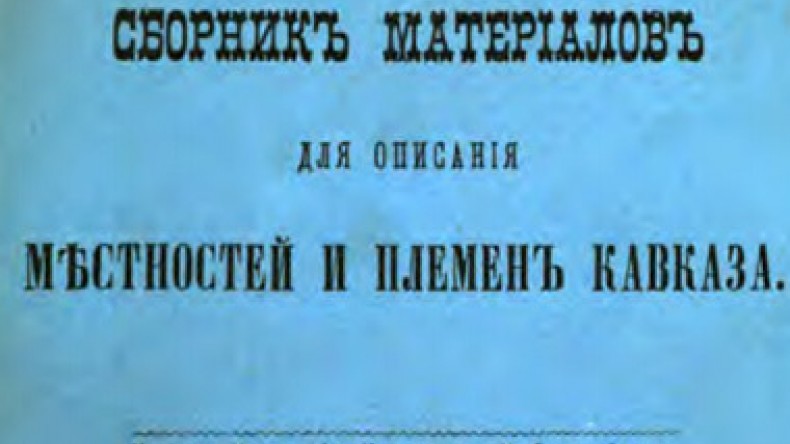
Scientific edition of Russian Empire: For 40 centuries no nation justified Armenians’ trust
In the second edition for the year 1881 of the project “The Collection of Materials to Describe the Terrain and Tribes in the Caucasus,” Nakhijevan city school inspector K.A. Nikitin published an extensive research titled “Nakhijevan: Biblical and legendary tales, historical data and ancient monuments.”
Nikitin presents rather interesting ethnographic observations about the Nakhijevani Armenians’ character and way of life. For that purpose, he carried out a study of the “village estates” of the Armenian population of Nakhijevan uyezd as he believed that “the earlier Armenians’ patriarchal life was preserved in its original purity only there.”
First, the author refers to the history, conditions and way of the Armenians’ schooling and education, pointing that the adoption of Christianity became the base for further development. “After the introduction of Christianity into Armenia, they took to education more persistently and already in the 4th century, the Armenian alphabet was created. Soon, manuscripts of primarily spiritual content started to appear, as well as schools of different degrees,” he writes.
The author notes that although the Armenians mastered Medicine, Astronomy and History, their primary education was first of all based on spiritual books exceptionally. Notably, the wealthy Armenians preferred to send their children to study in Rome and Greece, the educational centers of the time.
Nikitin highlights that the Armenians had all the opportunities for development due to their love for sciences and art, yet the internal discords led to Armenia’s fragmentation into small separate principalities that went under the rule of various nations in Europe and Asia. However, the clergy put in all the efforts to retain the ray of development and the education level of the people. They primarily operated for religious purposes, still were not able to fully recover the energy and will the early Armenians used to have.
Further, Nikitin describes the ethnographic characteristics of the Armenians who were already under the influence of the invaders, “Central Asian tribes.” Nikitin notes that their character and the worldview changed as they formed their attitude to the life, to the world and peoples around from the point of view of conquered and rightless residents of their own country. “Generally, the history had a strong, and, one might say, tangible impact on the development of the Armeniana. Under its influence, they became hardworking, sparing and keen-witted in everything that concerned their profit and provisions for future, as well as those of their generations,” the author points. He stresses that the negative features in the Armenians’ character were the result of the distrust towards the other nations “for throughout their 40-century-long existence, there was not a single nation to justify their trust.”
“The Collection of Materials to Describe the Terrain and Tribes in the Caucasus” is a large-scale publication of narrative sources carried out by the management of the Caucasus Educational Okrug in 1881-1908. It includes researches and description of the history, life, way of life and ethnographic characteristics of the peoples inhabiting the Caucasus region of the Russian Empire.
Related:
19th century scientific edition of Russian Empire compiled historical data about ancient Erivan
Scientific edition of Russian Empire: Armenian witnesses about Erivan Fortress capture
Newsfeed
Videos






























